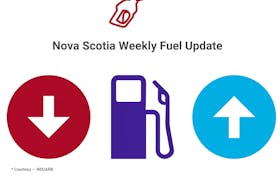If the collection of Atlantic-Canadian organizations and companies leading the Ocean Supercluster consortium wants to get a piece of the federal government’s $950-million innovation fund, they’ll need the interest and investment of the various business groups operating in the ocean sector.
On Monday afternoon, representatives of the consortium made their pitch and offered a glimpse of the work that’s being done to prepare the proposal for the final deadline on Nov. 24.
The Ocean Supercluster teams the primary industry investors — currently large ocean-based value chains Emera, Clearwater, Petroleum Research Newfoundland and Labrador (PRNL) and Cuna del Mar, a holding company invested in far offshore aquaculture projects — with enabling technology companies, mostly from the small and medium enterprise community.
“The notion behind the supercluster is that we would come together in a structured and deliberate set of collaborations that would be based on common focuses between different sectors in those value chains,” explained Matt Hebb, Dalhousie University’s assistant vice-president for government relations.
“So common capability requirements, common technology requirements, that would then be sort of curated in a set of collaborations through these different enabling technologies.”
The two main activity streams are technology leadership — collaborations to accelerate technology development in shared areas — and cluster building — what can be done to enhance collaborative efforts.
“How do we ensure that the activity that takes place in that technology development space, that commercial and market driven technology space, has a maximum benefit across the ecosystem in Atlantic Canada,” Hebb said.
For a country with the largest coastline in the world, Canada derives only 0.7 per cent of its gross domestic product from its ocean economy. That’s in stark contrast to Norway, whose worth is 6.5 times more than Canada’s, and accounts for six per cent of the global ocean economy.
“The opportunity to be more deliberate with the resource we have, we think, is significant and there’s really clear evidence that it can be done,” said Jim Hanlon of Nova Scotia’s Centre for Ocean Ventures and Entrepreneurship (COVE).
“We have the resource, we have the ability to do it, we’ve got the assets in the ecosystem here if we can fold them together.”
To qualify and be eligible to become one of three to five superclusters the federal government supports, bids must show private-sector investment commitments of at least a dollar for every government dollar requested.
At Monday’s event, CEO Alan Clarke said Petroleum Research Newfoundland and Labrador is contributing $30 million toward the minimum investment of $125 million over five years required to get access to the dollar-for-dollar money from Ottawa.
One local outfit on board since Day 1 is Kraken Robotics Inc., a marine technology company that specializes in designing, developing and marketing advanced sensors, software and underwater robotics for unmanned maritime vehicles used in military and commercial applications.
President and CEO Karl Kenny said a big part of the appeal was that the initiative is industry led and not led by academia.
“If you look at the hundreds of millions of dollars that have been put into academia over the last number of years in the region … what have been the outputs? How many jobs have been created? How many companies are contributing back into the economy?
“I would say not a hell of a lot, and that’s wrong and needs to be fixed.”
Since the private investment is being leveraged for federal funds and since they were going to invest the same amount of money in their own research and development over the next five years, going this route just makes sense for Kraken.
“If I can make my R&D spend go from $3 million and get $10 million worth of bang, that’s good for me, it’s good for the company, it’s good for the employees, it’s good for the shareholders and it’s good for the community,” Kenny said.
“You have these behemoths like Clearwater and Emera and PRNL, they know what they want, so let’s get take advantage of that and get linked up with those guys.”
Interested companies and organizations can visit oceansupercluster.ca for more information.
kenn.oliver@thetelegram.com
Twitter: kennoliver79








